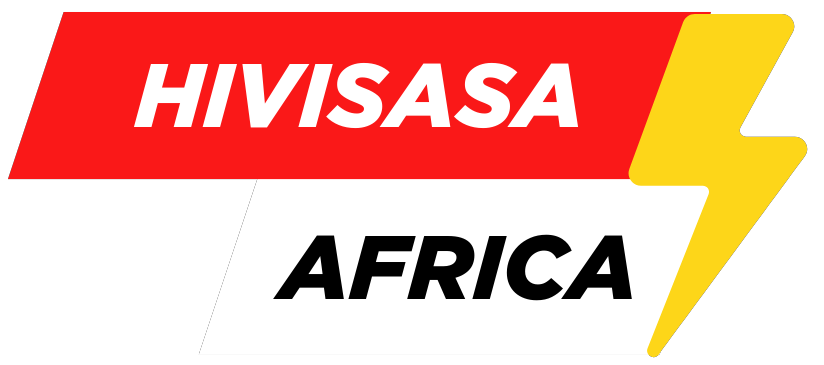The Higher Education Loans Board (HELB) has officially opened its HELB loan portal for loan and scholarship applications for the 2025–2026 academic year. This move comes as a much-awaited relief to thousands of Kenyan students preparing to join various universities and Technical and Vocational Education and Training (TVET) institutions across the country.
HELB is a key institution in enabling access to higher education. It is tasked with providing loans, bursaries, and scholarships to Kenyans pursuing advanced education, particularly those from financially disadvantaged backgrounds. With the launch of the new application window, students now have three ways to apply: via the HELB mobile app, through the online web portal, and by using the USSD code.
This year’s application season carries even more significance in the wake of structural reforms in higher education financing under the New Funding Model (NFM), introduced in the 2023/2024 financial year. The NFM replaced the previous blanket funding approach with a more targeted, needs-based allocation method that categorizes students into vulnerable, extremely needy, needy, and less needy brackets. This stratification is aimed at enhancing equity and ensuring that students who are most in need of support are adequately catered for.
As of the 2025 national budget announcement, the government has allocated Ksh 36 billion to the Higher Education Loans Board, a slight increase from the previous year’s Ksh 32.5 billion. Of this amount, about Ksh 21 billion is earmarked for university students under the NFM, while Ksh 10.5 billion is dedicated to TVET students. The rest is expected to cover administrative costs and repayments of maturing debt obligations.
The increased budget signals the government’s recognition of education as a key pillar of national development and a driver for economic transformation. However, the growing number of applicants and the rising cost of living continue to stretch HELB’s resources, necessitating improved processes and technological interventions to streamline service delivery.
For most students, accessing HELB support is the only viable path to achieving their academic dreams. Delays in applications, systemic inefficiencies, and technological glitches can derail entire cohorts, making it crucial that the application process be as smooth, accessible, and inclusive as possible. In this regard, HELB has diversified its platforms to accommodate students with different levels of access to digital tools. Below is a detailed guide on how students can apply for the HELB loan and scholarship through three main methods.
How to Apply for HELB Loan Using the HELB Mobile App
The HELB Mobile App is available for download on Android and iOS platforms. This method is suitable for smartphone users and offers a convenient and paperless application process.
- Download the App
Visit the Google Play Store or Apple App Store and search for “HELB Mobile App.” Download and install the official application. - Create an Account
Open the app and register by entering your National ID number and a valid phone number. You will be required to create a password and confirm it. - Login to Your Account
Use your credentials to log in. You will land on the dashboard, which displays various services such as loan application, loan status, and repayment options. - Fill in Bio-data and Academic Information
Click on “Apply for Loan” and start filling in your personal information, academic details, family background, and financial status. Upload scanned copies of your ID, admission letter, KCSE result slip, and birth certificate. - Attach Supporting Documents
The app allows you to upload necessary documents like your parent’s/guardian’s ID, death certificate (if orphaned), and a recent passport-size photo. - Submit Application
Review all details carefully. Once satisfied, click “Submit.” You will receive a confirmation message via SMS and email. - Track Application Status
You can monitor the progress of your application in real-time via the app.
How to Apply for HELB Loan Through the HELB Web Portal
This is the most traditional and widely used method, especially for applicants with access to computers or cyber cafes.
- Visit the HELB Website
Go to www.helb.co.ke and click on the “Student Portal” tab. - Register or Login
New users will need to create an account using their ID number and email. Returning applicants can log in using their existing credentials. - Access the Loan Application Form
After logging in, navigate to the “Loan Application” section and select the applicable loan type (Undergraduate, TVET, or Continuing Education). - Fill Out the Form Online
Enter your personal, academic, family, and financial information. Make sure the data matches your documents. - Download and Print the Form
After completing the online form, download and print a hard copy of the filled application. - Attach Required Documents
Affix all required documents as listed in the instructions—these include certified copies of ID, KCSE certificate, admission letter, and passport-sized photo. - Get Endorsements
Take the printed form to your local chief, commissioner of oaths, and relevant school authorities for stamping and verification. - Submit the Form Physically
Submit the duly completed and signed application form to any HELB office, Huduma Centre, or designated collection point.
How to Apply for HELB Loan Using the USSD Code
For students without access to smartphones or computers, HELB has introduced a USSD application method that works on any mobile phone.
- *Dial 642#
Use the line registered under your name and M-Pesa to dial *642#. - Register Your Account
First-time users will be prompted to enter their ID number and set a PIN for future access. - Select “Apply for Loan”
From the menu, choose “Student Loan Application” and follow the prompts to enter required details such as your institution, course, and year of study. - Confirm and Submit
After completing all sections, confirm the accuracy of your application and submit. - Receive Confirmation
A confirmation SMS will be sent to your number. You may later receive updates or a prompt to visit a HELB center for further verification.
While this method does not allow for document uploads, it is helpful in pre-registering students and guiding them on the next steps. It also allows users to check their loan balance, repayment status, and application updates.
The HELB loan remains a lifeline for over 400,000 students annually. Without it, many capable but underprivileged students would be locked out of higher education. By expanding the application channels, HELB acknowledges the diverse digital access levels in Kenya, especially in rural or remote areas. However, digital illiteracy and poor internet connectivity still pose challenges for many applicants.
Another issue lies in the delayed disbursement of funds, sometimes caused by underfunding or late budget approvals. The timing of government allocations and actual cash transfers to HELB remains critical. While the recent budget allocation is promising, it will only be effective if it translates into timely and adequate disbursement.
Furthermore, public trust in the system can be dented by technical glitches on the portal during peak application periods. In 2024, thousands of students complained of system crashes, failed logins, and an inability to upload documents on the web platform. HELB must prioritise its digital infrastructure, expand server capacity, and provide real-time customer support during the peak window of applications.
Areas of Improvement For Helb Loan Portal Efficiency
To improve the efficiency and inclusivity of its services, the Higher Education Loans Board (HELB) can adopt several key interventions that build on existing progress. First, the development of an AI-powered chatbot would significantly enhance customer support on both the web portal and mobile application.
Such a digital assistant could provide round-the-clock help, resolving common queries and guiding users through the application process in real time. This would reduce the heavy reliance on call centers and social media, which often become overwhelmed during peak application periods.
In addition to digital improvements, HELB loan could consider setting up mobile service desks in remote areas. These mobile units, operated in collaboration with the Ministry of Education, would serve as roving support centers that travel to marginalised and underserved counties. This initiative would be especially valuable for students who lack internet access or face digital literacy challenges, offering face-to-face assistance where it’s most needed.
Integration with eCitizen would further streamline the application process. By enabling a single sign-on system across government platforms, students could easily access HELB services alongside other state-provided scholarships, bursaries, and support programs without having to create multiple accounts or re-enter the same information repeatedly. This level of integration would not only simplify the process but also reduce errors and inconsistencies in data.
Moreover, to truly modernise and democratize access to funding, HELB should work toward allowing an end-to-end mobile application process. While the current mobile app and USSD options are commendable steps, the entire loan journey—including document submission and legally binding signatures—should be fully digital. This would eliminate the need for printing, physical forms, or visiting verification offices, making the application process smoother and more accessible for all students, regardless of location.
Timely disbursement of funds remains an essential area for improvement. HELB must coordinate closely with the National Treasury to ensure that allocated resources are released in good time. Prompt disbursement allows students to settle their tuition fees and cover essential upkeep costs without disruption to their studies, particularly those from extremely needy backgrounds who depend entirely on this financial support.
Lastly, public awareness must be prioritized. A significant number of eligible students miss out on funding opportunities simply due to lack of information or confusion about the process. HELB should invest in robust county-level sensitization campaigns, engaging chiefs, Members of County Assemblies (MCAs), principals, and local influencers to educate students and parents about how, when, and where to apply. Such grassroots outreach would ensure that no deserving student is left behind due to ignorance or misinformation.
By implementing these measures, HELB loan would not only improve the efficiency of its loan application and disbursement process but also affirm its role as a pivotal institution in advancing equitable access to higher education in Kenya.
As the academic year draws closer, the HELB loan application process will continue to be one of the most critical bridges between secondary school and higher education for thousands of young Kenyans. With budgetary support from the government, tech-enabled platforms, and responsive institutional reforms, HELB has the opportunity to transform lives, one loan at a time. What remains now is for students, guardians, and institutions to act promptly, follow guidelines, and push for transparency and efficiency in the entire process.
ALSO READ: How To Apply For University Placement On KUCCPS Portal












Am Cynthia nyakerario choki out family are so poor they cannot be able to pay for school fees I just request need your help
Great